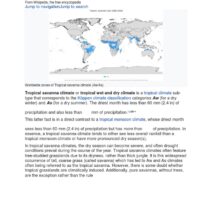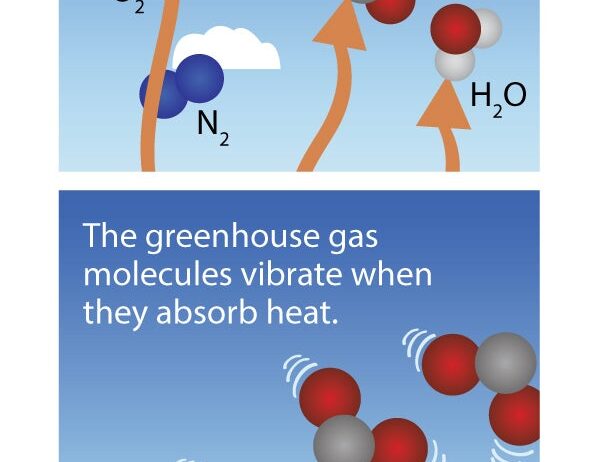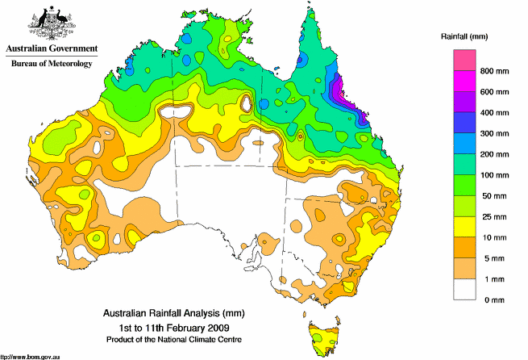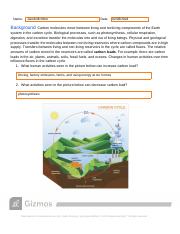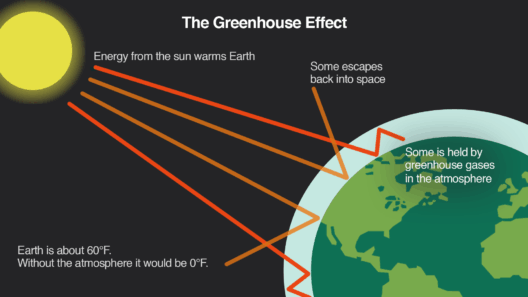The greenhouse effect serves as a fundamental component of Earth’s climate system. It acts as a warming blanket, enveloping our planet and maintaining temperatures conducive to life. However, the increasing concentration of greenhouse gases is slowly altering this delicate balance. To grasp the implications of this phenomenon, visual representation becomes a powerful tool, not only illustrating scientific principles but also evoking an emotional connection to this critical environmental issue.
Understanding how greenhouse gases trap heat in Earth’s atmosphere requires a closer examination of the interplay between solar radiation and terrestrial emissions. As sunlight penetrates Earth’s atmosphere, a portion is absorbed by the surface, which subsequently radiates the energy back into the atmosphere in the form of infrared radiation. Greenhouse gases, such as carbon dioxide, methane, and nitrous oxide, absorb this infrared radiation, consequently warming the atmosphere. The visual depiction of these processes can evoke a sense of urgency and importance in addressing climate change.
One key characteristic of the greenhouse effect is its intricacy. A detailed illustration typically showcases the sun’s rays beaming towards Earth while indicating the reflection of light by Earth’s surface. The artwork adds layers of complexity, highlighting the absorption of heat by various greenhouse gases. This multifaceted representation urges viewers to appreciate the nuances of climate dynamics. It beckons us to confront the uncomfortable truth that human activities, notably fossil fuel combustion and deforestation, have augmented these gas concentrations, resulting in a more pronounced greenhouse effect.
The aesthetic appeal of visualizing the greenhouse effect holds profound implications. Capturing the essence of this delicate balance can render the scientific narrative more accessible to the general public. A well-crafted graphic not only informs but also engages individuals on an emotional level. Colorful representations of greenhouse gases juxtaposed against the vibrant hues of Earth’s surface can inspire awe and a sense of responsibility. Invoking emotional responses can be a potent catalyst for action. It is a call to recognize the gravity of our actions and their resultant impact on our planetary ambiance.
Equally important is the role of aesthetics in fostering understanding among diverse audiences. The intricate patterns of heat absorption and reflection can be articulated through engaging designs that resonate with both scientists and laypersons alike. Creative representations may include diagrams illustrating heat cycles, animated infographics, or even artistic renditions, all of which are pivotal in bridging the gap between complex scientific phenomena and tangible, relatable experiences. A more profound understanding of these concepts can empower individuals and communities to advocate for policies aimed at reducing greenhouse gas emissions.
Examining the greenhouse effect also leads to discussions about its historical context and how it has evolved with industrialization. Early scientific recognition of the greenhouse effect emerged in the 19th century, but it wasn’t until the latter half of the 20th century that concerns regarding the anthropogenic contributions to climate change gained prominence. Understanding this evolutionary timeline not only highlights the significance of scientific inquiry but also frames current discourse within a historical narrative. Striking visualizations can depict this progression, prompting both reflection and action.
Furthermore, visual storytelling can shine a spotlight on the scientific community’s ongoing research efforts aimed at quantifying the impacts of greenhouse gases on climate patterns. Charts and graphs depicting rising CO2 levels over the decades can serve as stark reminders of the escalating crisis. When these figures are rendered visually, they transcend mere statistics, becoming compelling illustrations of a warming planet. Projections regarding future temperature increases, drought frequencies, and other climate-related phenomena can empower advocates and policy-makers alike, reinforcing the need for immediate and collective action to combat these challenges.
The intricacies of the greenhouse effect underline a profound truth: it is not merely a scientific principle but a shared reality that pertains to all life on Earth. The privilege of visualizing these processes culminates in an appreciation for the interconnectedness of human actions and ecological health. It invites contemplative engagement with the environment, urging us to reflect upon our responsibilities as stewards of the planet.
Ultimately, a picture of the greenhouse effect encapsulates more than just scientific data; it evokes a story of our planet and poses an urgent question: What legacy will we leave for future generations? Visually articulating the mechanisms behind how greenhouse gases trap heat provides both an urgent wake-up call and a beacon of hope for sustainability. So much can be gleaned from these representations, fostering a sense of collective responsibility toward mitigating climate change. It is through our understanding and our actions, inspired by powerful imagery, that we can embrace the challenge ahead.
In conclusion, as we peer into the future, the need for a deeper understanding of and connection to the greenhouse effect is undeniable. By combining informative and aesthetic elements in our visual narratives, we can cultivate awareness and inspire action. Our planet’s health depends on our ability to grasp the ramifications of our actions, appreciate their intricacies, and ultimately commit ourselves to a sustainable future.
